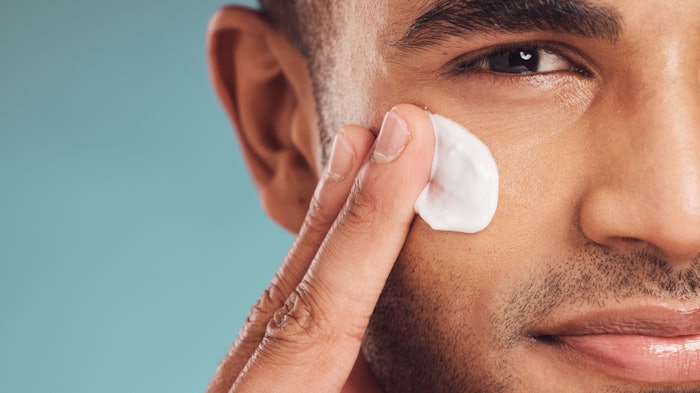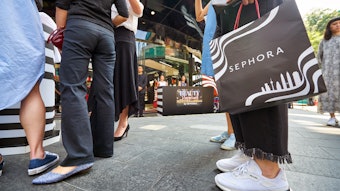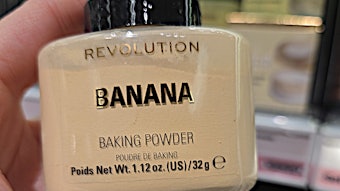
This collection of five Expert Opinions reveals current and future trends and ideas for skin barrier reinforcement products. Insights are included from Taylor Oswald, of Deinde; Brian Freedman, of Evolved By Nature; Celia Brunel, from Laboratoires Expanscience; Edna Coryell, of Mother Science; Kari Sinivuori, from Uute Scientific Oy; and Paul Lawrence, Ph.D., of Biocogent, LLC. Innovative ideas range from strengthening solutions and preventative care, to biotech, plant polyphenols, microbiota and more.
The National Center for Complementary and Integrative Health reports1 that as many as one in three Americans are affected by skin diseases. And the numbers are rising.
In 2023, the British Journal of Dermatology2 emphasized that “the global prevalence of dermatologic diseases has risen significantly,” elevating this category of illnesses to the “fourth most common cause of nonfatal disease burden in recent decades.”
The source added that beyond genetics, environmental aspects such as climate and air pollution play a key role in exacerbating skin diseases. A recent study published in PLOS agrees:3 “The prevalence of eczema has increased with industrialization,” it reports.
Indeed, a regression model published in 2023 by the National Institutes of Health4 showed that over the course of 27 years, based on data from 122,000+ adolescents and children in 14 countries, the prevalence of lifetime eczema multiplied by 2.71% per decade in adolescents and 3.91% per decade in children.
Furthermore, there was substantial variation in prevalence according to income and region. For example, between 2015 and 2020, of the regions surveyed, the highest prevalence (> 10%) was in urban areas including South Santiago, Cape Town, Bilbao, A Coruña, Quito, Lattakia, Bankgok, Taipei and Auckland.4
The PLOS paper examined a large diverse adult American cohort (n = 12,695) and found that with greater particulate matter ≤ 2.5 μm (PM2.5) concentration, the odds of eczema increased.
One would also be remiss to forget the effects of stress – which is yet another culprit behind the development of skin diseases, as recent work in the psychodermatology field has revealed.5
It’s no wonder why consumers are so focused on skin health.6 Reflecting back, COVID-19 stripped our skin barriers and microbiomes down, making skin more susceptible to the changing environment and mounting stress.
So how might product developers rebuild our skin barriers and/or reinforce what’s left? And what current and future dynamics will impact the skin barrier care market? We asked several industry experts to weigh in. Following are their responses.
Naringenin and Preventative, Strengthening Skin Care
According to Taylor Oswald, director of ingredient and product innovation for preventative skin care brand Deinde, millennials are driving demand for skin barrier care. “The skin barrier market is expected to grow to $1.12 billion this year, which is not surprising as millennials are increasingly invested in their overall skin health,” writes Oswald, adding, “70% claim they’re more invested in their overall skin health now than they were this time last year.”
Oswald points to skin health and sensitivity as key directions in this space. “We see consumers continue to prioritize a preventative approach for overall skin health versus resorting to more abrasive treatments,” Oswald explains. “[Also], nearly 70% of skin care consumers identify as having sensitive skin. [In relation], Deinde products are SkinSAFE certified, fragrance-free and recognized by the National Eczema Society’s Seal of Acceptance.”
Another angle Oswald predicts is for skin barrier strengthening products. “Chronic, low-level inflammation – known as inflammaging – triggered by environmental stressors cause disruptions to the skin barrier. Skin can become more resilient to inflammaging through an anti-inflammatory lifestyle, including a preventative skin care routine. Deinde’s Barrier-Building Moisture Cream is clinically proven to improve moisturization instantly and can also interrupt the inflammaging process, preventing future damage to skin with a novel and patented ingredient, biotech-derived Naringenin.”
Per Oswald, naringenin is a powerful polyphenol that is found in trace amounts in grapefruit peel. It targets the critical anti-inflammatory markers IL-6 and TNF-α and inhibits elastase activity, which helps to reduce collagen breakdown and inhibits glycation to help prevent loss of skin elasticity.
“Biotech enables us to unlock molecules that occur in trace amounts naturally, infinitely expanding the number of molecules beauty brands can access,” Oswald adds. “Unlike plant-derived materials, biotech ingredients aren't susceptible to natural elements. … Biotech [also] allows us to produce the isolated active ingredient with consistency and at a precise dose, delivering the exact clinically proven value for optimized results … that are both high performing and gentle.”
Peptides and Daily Skin Barrier Boost
Brian Freedman, senior director of strategic marketing and product management at Evolved By Nature, also sees consumers are focused on skin health. “Barrier-boosting products are gaining significant popularity among consumers, largely driven by a shift in mindset regarding skin health,” Freedman writes.
“More people are recognizing that the condition of their skin is closely linked to their overall well-being. This increased awareness has led consumers to take a more proactive approach to skin health, investing in products that are preventative rather than aimed at treating specific skin flaws.”
He adds, “Just as SPF is now a staple in daily skin care products, we can expect barrier-boosting ingredients that protect and repair against other environmental irritants, such as oxidative stress, to become increasingly common in daily use products. As consumers become more aware of the impact of pollution and stressors on skin health, skin care formulations will evolve to address these concerns and reinforce the skin's natural defenses.”
In terms of technologies to address these market directions, Freedman highlights his company’s peptides. “The use of naturally derived bioactive ingredients, such as our Activated Silk peptides, will grow as the industry embraces more sustainable and science-led practices. Companies will increasingly turn to sustainable biotechnology and scientifically engineered skin care ingredients that are scaled to service a global industrial supply chain, reducing dependence on petrochemicals and over-harvested plants.”
Ceramides, HA and Skin Repair Claims
“Consumers are becoming increasingly aware of the vital role the skin barrier plays in maintaining healthy, radiant skin,” observes Celia Brunel, sales and operational marketing manager for Laboratoires Expanscience. “In fact, 70% of U.S. consumers now prioritize protecting their skin barrier more than they did a year ago (Mintel, 2023).”
Brunel highlights that the skin care market reflects this growing awareness, with U.S. product launches featuring barrier repair claims increasing by 35% from 2020 to 2023 (Mintel, 2023). “Consumers increasingly understand that maintaining good skin health is fundamental to achieving beautiful skin,” she adds. “Ceramides – essential lipids produced by dermal and epidermal cells – are central to skin barrier function, making them a cornerstone of this trend.”
According to Brunel, this shift has driven demand for products enriched with barrier-supporting ingredients such as ceramides and hyaluronic acid (HA). She points to two of the company’s ingredient examples.
“Soline Bio (INCI: Helianthus Annuus (Sunflower) Seed Oil Unsaponifiables) is a liposoluble ingredient that boosts ceramide production, enhancing lipid replenishment. It increases the synthesis of ceramides 1 and 2 by 289% and 171%, and cerebrosides by 64%.” She adds that it is clinically proven to provide immediate and long-lasting moisturization (1 hr and 24 hr) and it improves skin appearance.
Another example is Gaialine (INCI: Linum Usitatissimum (Linseed) Seed Oil), a liposoluble active derived from regenerative sourcing. “Clinical studies demonstrate its effectiveness, showing a 67.3% increase in ceramide levels, reinforcing its role in restoring and strengthening the skin barrier,” she writes.
Malassezin and Skin Repair + Pigmentation, Texture Treatments
Edna Coryell, CEO of Mother Science, underscores consumers’ awareness of skin health and desire for a smooth complexion as drivers in the skin barrier care space. “Consumers are increasingly aware of the critical role the skin barrier plays in achieving skin health and a hydrated, smooth complexion,” Coryell writes. “Ceramides and lipids remain staples for barrier care, but the market is shifting toward innovations that blend barrier repair and targeted treatments for hyperpigmentation and skin texture.”
She adds that the growing emphasis on barrier care is fueled by the wealth of information shared by dermatologists and skin care professionals on social media. “These experts provide accessible, science-backed insights that have empowered consumers to prioritize barrier health as a cornerstone of their routines.”
Per Coryell, moving forward, trends in skin barrier care are moving toward advanced treatment products. “[These feature] bioengineered actives that repair while addressing aging and environmental damage.” She notes that streamlined routines with multifunctional products, combining hydration, anti-aging and barrier support, are also gaining traction to reduce irritation and simplify skin care.
To support future directions in this space, Coryell observes technologies like genetic analysis are driving advancements in skin barrier care by enabling the identification of new bioactive ingredients. “These techniques analyze the genetic and molecular responses of the skin to potential actives, allowing researchers to pinpoint ingredients that can address multiple skin concerns while simultaneously strengthening the barrier.”
According to Coryell, such genetic analysis is behind Mother Science’s Molecular Genesis Barrier Repair Moisturizer, which uses the novel biotech ingredient malassezin. “This breakthrough ingredient works by fortifying skin barrier cells, enhancing their resilience against environmental stressors while simultaneously improving skin radiance and texture,” she explains. “By targeting the barrier at a cellular level, Mother Science Molecular Genesis Barrier Repair addresses multiple concerns, offering smoother, healthier, and more luminous skin in a single step.”
Immunity via Transient Microbiota from Nature
Kari Sinivuori, CEO and co-founder of Uute Scientific Oy, emphasizes the move toward actives to strengthen skin. “Currently, products based on biodiversity-rich active ingredients are growing,” he writes. “Unlike emollients, instead of only forming a protective barrier on skin, these are capable of actually strengthening the skin barrier. This happens by introducing transient microbiota from nature to the skin.”
Per Sinivuori, transient microbiota from nature are, to a large extent, missing from cities. As such, products to address this gap have expanded in recent year, “from zero to over one hundred products on the market.” Indeed, Sinivuori believes, in the future, “natural cosmetics will be seen not only as ingredients derived from natural sources, but also as a way to bring the microbial biodiversity of nature to your skin.”
He continues, “[The] skin barrier will be associated more to health, since the barrier is essential for keeping out pathogens and allergens, which are causing immune system problems. These are also causing unnecessary redness and itching, which also lead to other severe health problems.”
According to Sinivuori, healthy skin is beautiful skin and there is potential for products that can reduce skin problems and the unnecessary use of traditional medication.
“Natural solutions that are also biodiversity-rich will be increasingly important since the deficits in the skin barrier are associated with the lack of transient microbiota,” he adds, pointing to Uute Scientific’s Re-Connecting Nature microbial extract. The extract reportedly comes from “clean Finnish nature” and is an excellent source of microbial biodiversity for all skin types. “[T]here are already over 100 products [containing it] available for consumers by 35 brands in 10 countries,” Sinivuori notes.
Microbiome and Microbial-based Technologies
"Efforts to strengthen the skin barrier have been historically popular, as these can:
- enhance skin moisturization,
- prevent transepidermal water loss (TEWL) and
- prevent infection with pathogenic microbes,"
observes Paul Lawrence, Ph.D., executive director of research and discovery at Biocogent, LLC. "There are no signs that interest will subside any time soon."
He adds that with the rise of more informed consumers, the importance of maintaining the skin barrier has resonated with them. "This sector of the skin care market saw roughly $360 million in value in 2023. Advance to the year 2032 and forecasters suggest the value will continue to rise to almost $550 million."
In terms of future directions, Lawrence points to the microbiome. "My bias as a microbiologist might be showing, but I believe another aspect of modern skin care that will converge with the skin barrier market is the evolving understanding of the skin microbiome ... as well as the expansion of microbial-based technologies like precision fermentation."
He continues, "One of the most abundant bacteria on skin is Staphylococcus epidermidis that secretes an enzyme called sphingomyelinase that promotes ceramide synthesis. Ceramide acts as the mortar to the bricks that are the skin cells of the epidermis, promoting cell-to-cell junction barrier maintenance. Furthermore, precision fermentations can produce specific molecules designed to augment the activity, such as desmoglein, that also strengthens the skin barrier."
Lastly, in terms of technologies to support these directions, Lawrence again turns to microbes. "Much of the microbiome-based interventions fall into one of three classifications: prebiotics, probiotics and postbiotics. Some groups are marketing prebiotics intended to stimulate the growth of beneficial microbes like S. epidermidis. Precision fermentation processes can be described as 'postbiotics,' whereby specific, ameliorative molecules are safely liberated from microbes in a natural, bioavailable state that can be easily formulated into next generation products."
Conclusions
Skin health remains a central concern for consumers, putting pressure on product innovators to develop ways to repair, strengthen and/or protect the skin barrier. Whether tapping into biotechnology or nature itself; filling the cracks with ceramides, HA, etc.; or activating biological mechanisms in skin, the industry is answering from all sides.
References
1. NIH. (Accessed 2024, Dec 3). Skin conditions at a glance. Available at https://www.nccih.nih.gov/health/skin-conditions-at-a-glance
2. Singh, N. and Schikowski, T. (2023, Apr). Skin diseases and emerging determinants: The need for interactive research. British Journal of Dermatology. Available at https://doi.org/10.1093/bjd/ljad008
3. Chen, G.F., Hwang, E., Leonard, C.E. and Cohen, J.M. (2024, Nov 13). Association between fine particulate matter and eczema: A cross-sectional study of the All of Us Research Program and the Center for Air, Climate and Energy Solutions. PLOS One. Available at https://doi.org/10.1371/journal.pone.0310498
4. Langan, S.M., Mulick, A.R., ... Pearce, N., et al. (2023, Feb). Trends in eczema prevalence in children and adolescents: A Global Asthma Network Phase I Study . Clin Exp Allergy. Available at https://pmc.ncbi.nlm.nih.gov/articles/PMC10946567
5. Zhang, H., Wang, M., Zhao, X., Wang, Y., Chen, X. and Su, J. (2024, Feb). Role of stress in skin diseases: A neuroendocrine-immune interaction view. Brain, Behavior and Immunity. Available at https://www.sciencedirect.com/science/article/pii/S0889159123003768
6. Grabenhofer, R. (2024, Aug 28). Editor's note: Pursuit of skin health and happiness. Cosmetics & Toiletries. Available at https://www.cosmeticsandtoiletries.com/research/consumers-market/article/22916999











